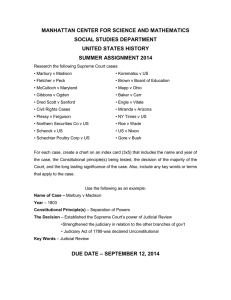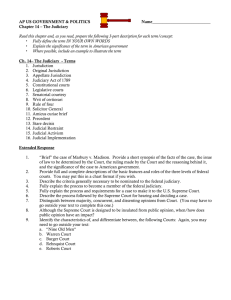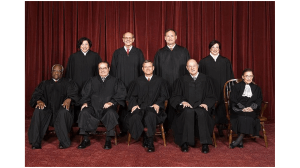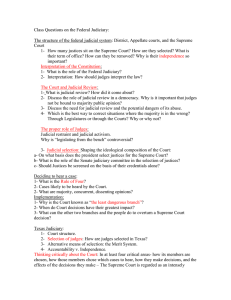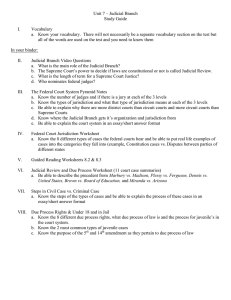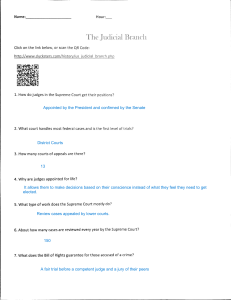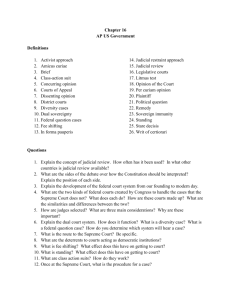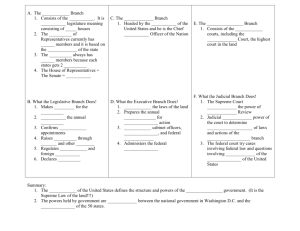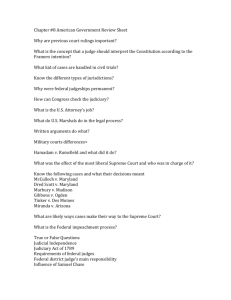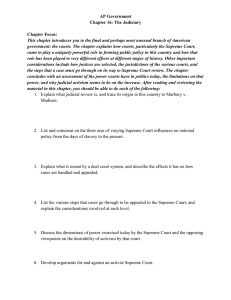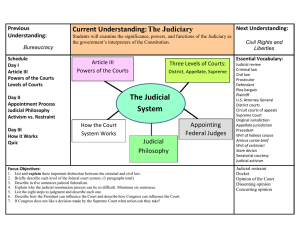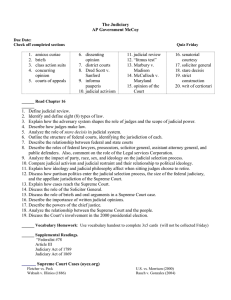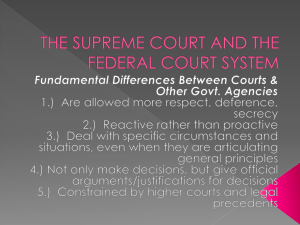Chapter 9
advertisement
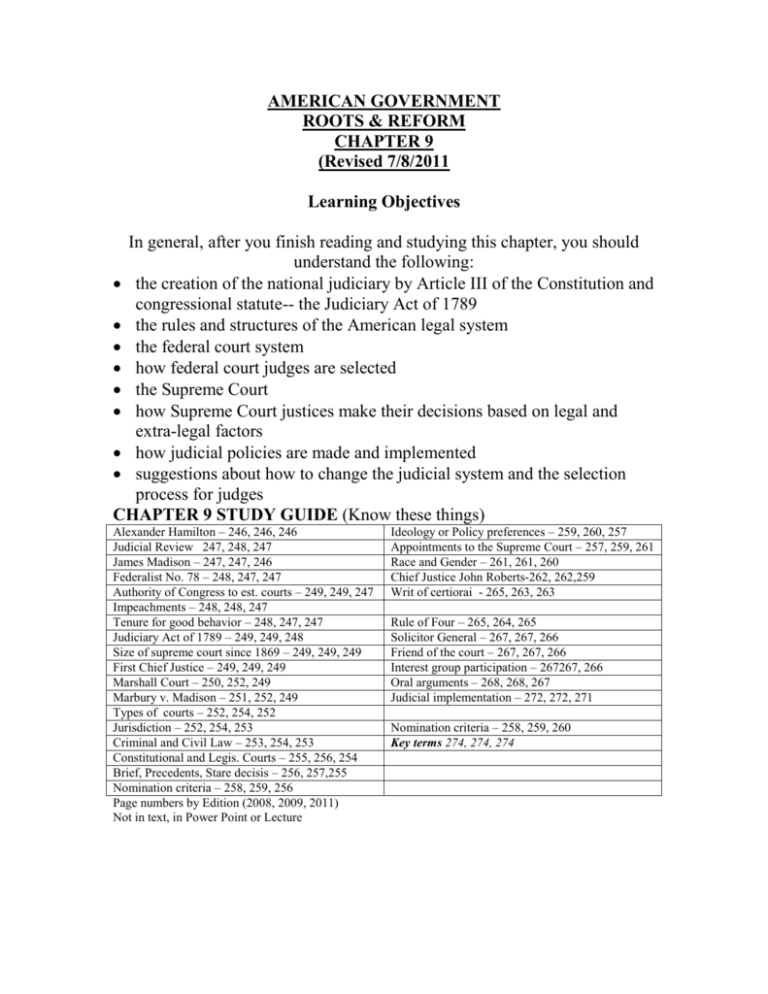
AMERICAN GOVERNMENT ROOTS & REFORM CHAPTER 9 (Revised 7/8/2011 Learning Objectives In general, after you finish reading and studying this chapter, you should understand the following: the creation of the national judiciary by Article III of the Constitution and congressional statute-- the Judiciary Act of 1789 the rules and structures of the American legal system the federal court system how federal court judges are selected the Supreme Court how Supreme Court justices make their decisions based on legal and extra-legal factors how judicial policies are made and implemented suggestions about how to change the judicial system and the selection process for judges CHAPTER 9 STUDY GUIDE (Know these things) Alexander Hamilton – 246, 246, 246 Judicial Review 247, 248, 247 James Madison – 247, 247, 246 Federalist No. 78 – 248, 247, 247 Authority of Congress to est. courts – 249, 249, 247 Impeachments – 248, 248, 247 Tenure for good behavior – 248, 247, 247 Judiciary Act of 1789 – 249, 249, 248 Size of supreme court since 1869 – 249, 249, 249 First Chief Justice – 249, 249, 249 Marshall Court – 250, 252, 249 Marbury v. Madison – 251, 252, 249 Types of courts – 252, 254, 252 Jurisdiction – 252, 254, 253 Criminal and Civil Law – 253, 254, 253 Constitutional and Legis. Courts – 255, 256, 254 Brief, Precedents, Stare decisis – 256, 257,255 Nomination criteria – 258, 259, 256 Page numbers by Edition (2008, 2009, 2011) Not in text, in Power Point or Lecture Ideology or Policy preferences – 259, 260, 257 Appointments to the Supreme Court – 257, 259, 261 Race and Gender – 261, 261, 260 Chief Justice John Roberts-262, 262,259 Writ of certiorai - 265, 263, 263 Rule of Four – 265, 264, 265 Solicitor General – 267, 267, 266 Friend of the court – 267, 267, 266 Interest group participation – 267267, 266 Oral arguments – 268, 268, 267 Judicial implementation – 272, 272, 271 Nomination criteria – 258, 259, 260 Key terms 274, 274, 274
